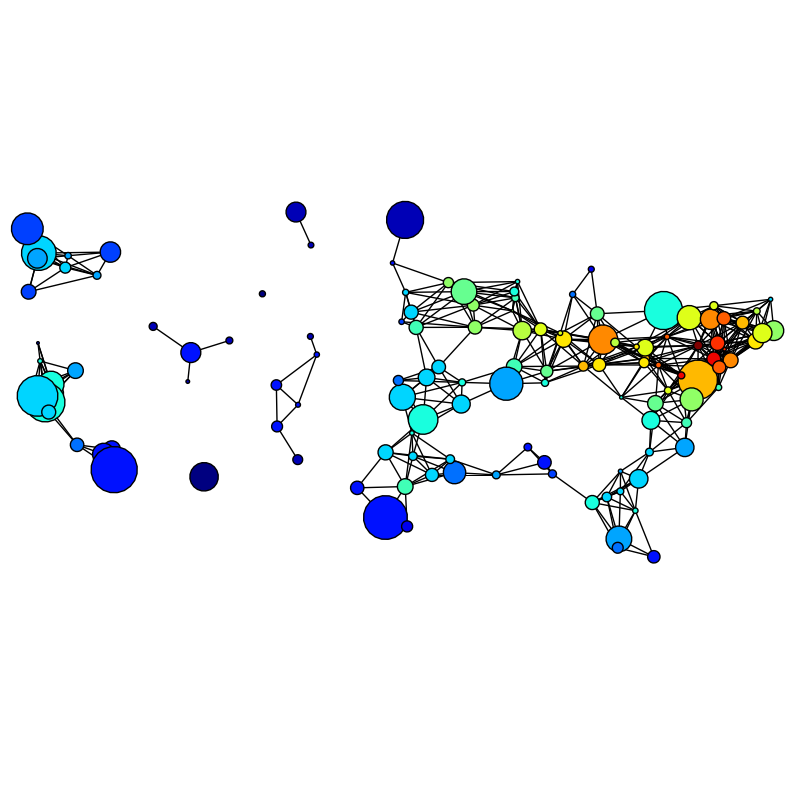#!/usr/bin/env python
"""
An example using networkx.Graph().
miles_graph() returns an undirected graph over the 128 US cities from
the datafile miles_dat.txt. The cities each have location and population
data. The edges are labeled with the distance betwen the two cities.
This example is described in Section 1.1 in Knuth's book [1,2].
References.
-----------
[1] Donald E. Knuth,
"The Stanford GraphBase: A Platform for Combinatorial Computing",
ACM Press, New York, 1993.
[2] http://www-cs-faculty.stanford.edu/~knuth/sgb.html
"""
__author__ = """Aric Hagberg (hagberg@lanl.gov)"""
# Copyright (C) 2004-2006 by
# Aric Hagberg <hagberg@lanl.gov>
# Dan Schult <dschult@colgate.edu>
# Pieter Swart <swart@lanl.gov>
# Distributed under the terms of the GNU Lesser General Public License
# http://www.gnu.org/copyleft/lesser.html
import networkx as nx
def miles_graph():
""" Return the cites example graph in miles_dat.txt
from the Stanford GraphBase.
"""
# open file miles_dat.txt.gz (or miles_dat.txt)
try:
try:
import gzip
fh = gzip.open('knuth_miles.txt.gz','r')
except:
fh=open("knuth_miles.txt","r")
except IOError:
raise "File knuth_miles.txt not found."
G=nx.Graph()
G.position={}
G.population={}
cities=[]
for line in fh.readlines():
if line.startswith("*"): # skip comments
continue
numfind=re.compile("^\d+")
if numfind.match(line): # this line is distances
dist=line.split()
for d in dist:
G.add_edge(city,cities[i],int(d))
i=i+1
else: # this line is a city, position, population
i=1
(city,coordpop)=line.split("[")
cities.insert(0,city)
(coord,pop)=coordpop.split("]")
(y,x)=coord.split(",")
G.add_node(city)
# assign position - flip x axis for matplotlib, shift origin
G.position[city]=(-int(x)+7500,int(y)-3000)
G.population[city]=float(pop)/1000.0
return G
if __name__ == '__main__':
import networkx as nx
import re
import sys
G=miles_graph()
print "Loaded miles_dat.txt containing 128 cities."
print "digraph has %d nodes with %d edges"\
%(nx.number_of_nodes(G),nx.number_of_edges(G))
# make new graph of cites, edge if less then 300 miles between them
H=nx.Graph()
for v in G:
H.add_node(v)
for (u,v,d) in G.edges(data=True):
if d < 300:
H.add_edge(u,v)
# draw with matplotlib/pylab
try:
import matplotlib.pyplot as plt
plt.figure(figsize=(8,8))
# with nodes colored by degree sized by population
node_color=[float(H.degree(v)) for v in H]
nx.draw(H,G.position,
node_size=[G.population[v] for v in H],
node_color=node_color,
with_labels=False)
# scale the axes equally
plt.xlim(-5000,500)
plt.ylim(-2000,3500)
plt.savefig("knuth_miles.png")
except:
pass
